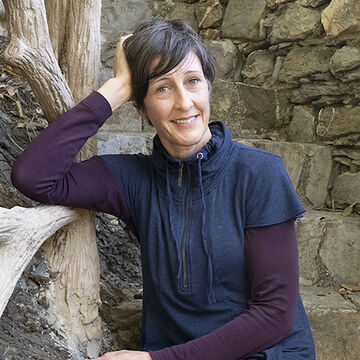| Research Studio I: Transfers |
Contemporary Practices |
1021 (004) |
Fall 2024 |
|
Description
In this course we will focus on the development of artistic research skills for students already engaged in a practice. Students take this required course in order to experience and develop a variety of research methodologies, both conventional and alternative, which include utilizing collections and archives in the School and the extended community. Students will undertake various types of research activities: a) collecting and classification, b) mapping and diagramming, c) systems of measurement, d) social interaction, e) information search systems, f) recording and representation, and g) drawing and other notational systems. Faculty directed, open-media, interdisciplinary, idea based assignments are designed to help students recognize work habits, biases, strengths, and weaknesses. Through this course work students will be able to identify the most productive research methods and making strategies to bolster their emerging studio practice. Critique as an evaluative process used in art and design schools, is a focus in this course. Various methods and models of critique are used in order to give students the tools to discuss their own work and the work of others.
|
Class Number
1366
Credits
3
|
| RS:Embodied |
Contemporary Practices |
1022 (041) |
Spring 2024 |
|
Description
In this course we’ll consider bodily phenomena, including the psychology of pain, the beef industry, and wastewater treatment infrastructure. We’ll reflect on metaphysical phenomena that arise from the enigma of living as bodies, like avatars and spiritual iconography, the uncanny, and cuteness. And we’ll direct our research “inward”, notating sensory phenomena, tracking habits and experimenting with different modes of perception. We perceive the world through the filter of our bodies, and project them – not only their shape but also the feelings and myths that accompany them – onto everything we see. Among other things this makes bodies a rich source of metaphor for art making. How might the physiology of a nerve impulse suggest an editing structure for an animation? What would a vertigo-inspired drawing look like? We’ll direct our research toward both art and science, reading case studies of neurologic disorders by Oliver Sacks, and looking at artworks by Tracey Emin, Chen Zhen, Juliana Huxtable, Mika Rottenberg, Wim Delvoye and more. Students will be supported to pursue their individual interests through regular observational assignments, a research presentation and two large-scale projects.
|
Class Number
1685
Credits
3
|
| Fantasy, Romance, Transcendence |
Performance |
3019 (001) |
Fall 2024 |
|
Description
This course will examine the miraculous and menacing faces of fantasy: from proms, propaganda, internet romance scams, science fiction and Caffeine Free Diet Coke, to transformative and even healing collective rituals. The body’s vulnerability to awkwardness and fatigue often seem to contrast air brushed visions of the spectacular and miraculous. Art works that use live presence to address the imaginary can therefore encourage critical reflection about the nature of longing, even as they sweep us away. How does fantasy function for human beings? Discussions about belief, desire, nostalgia, fetishism and the sacred will be guided by readings from Slavoj Zizek, Byung-Chul Han and Hito Steyerl, and artwork by Frances Stark, Miranda July, Ligia Lewis and Jacolby Satterwhite. In this class a broad range of methods for performance practice will be considered, including those that incorporate media to access the fantastic, and those that re-invent the long history of art-as- ritual. Vocal and movement improvisation games, creative writing exercises, creative responses and small-scale assignments will support students to generate three, more substantial, projects that further their individual interests and goals.
|
Class Number
2138
Credits
3
|
| Graduate Projects: Performance |
Masters in Fine Arts |
6009 (053) |
Spring 2024 |
|
Description
Taken every semester, the Graduate Projects courses allow students to focus in private sessions on the development of their work. Students register for 6 hours of Graduate Project credit in each semester of study.
|
Class Number
1311
Credits
3 - 6
|
| Graduate Projects: Performance |
Masters in Fine Arts |
6009 (158) |
Fall 2024 |
|
Description
Taken every semester, the Graduate Projects courses allow students to focus in private sessions on the development of their work. Students register for 6 hours of Graduate Project credit in each semester of study.
|
Class Number
2306
Credits
3
|

